 With nearly six decades of Reno air racing now behind us, it’s worth reflecting on what we gained from the experience. We’d better remember, for without a doubt racing is a stern taskmaster, too often extracting a huge price for what we get out of it. But within its unyielding demands it does return rewards, some technical but most tangential to the racing itself.
With nearly six decades of Reno air racing now behind us, it’s worth reflecting on what we gained from the experience. We’d better remember, for without a doubt racing is a stern taskmaster, too often extracting a huge price for what we get out of it. But within its unyielding demands it does return rewards, some technical but most tangential to the racing itself.
As we take our first look back on what went on at Sky Ranch and Stead Field for six decades, the first thing we should consider is that it happened at all. Certainly there was nothing high-minded about any of it in the beginning. No less an authority than Mira Slovak, pilot of Bill Stead’s Bearcat and the first Unlimited champion in 1964, told us the air races got their start when run-around buddies Bill Boeing Jr. and Bill Stead realized they owned a number of interesting airplanes and how it would be fun to show them off in some sort of airshow. “They were playboys,” Mira said, going on to note their first thought was to simply parade their collection of WW-II iron around to an adoring public.
It didn’t take long for Bill Stead to offer up the Sky Ranch property a bit north of Sparks, Nevada—right next to Reno—as a cost-effective place to hold their airshow. The next step was realizing that racing the then just 20-year-old iron would be far more interesting than a typical airshow. Borrowing class organizations and a scoring system the pair was familiar with from Unlimited hydroplane racing—Mira also drove Boeing’s race boats—the idea for the air races was set.
It was the right event at the right time, but maybe in the wrong place. The small, dirt and dirty Sky Ranch proved problematic, and by 1966 the National Air Races were moved to Reno-Stead, where they’d be held for the next 57 years. Air racing historian Robert Hirsch says it wasn’t until 1971, when the gate covered the event’s expenses—a good indication of how much enthusiasm there was—that the new air races were self-sufficient.
As the races grew in viability they settled in for a long run of some truly exciting hot-rodded WW-II fighters headlining everything, with the Formula 1 and Biplane ranks for the more homespun amateur designers and
builders. Plentiful T-6 trainers provided a noisy stock class and later a speed-limited Jet class was added.
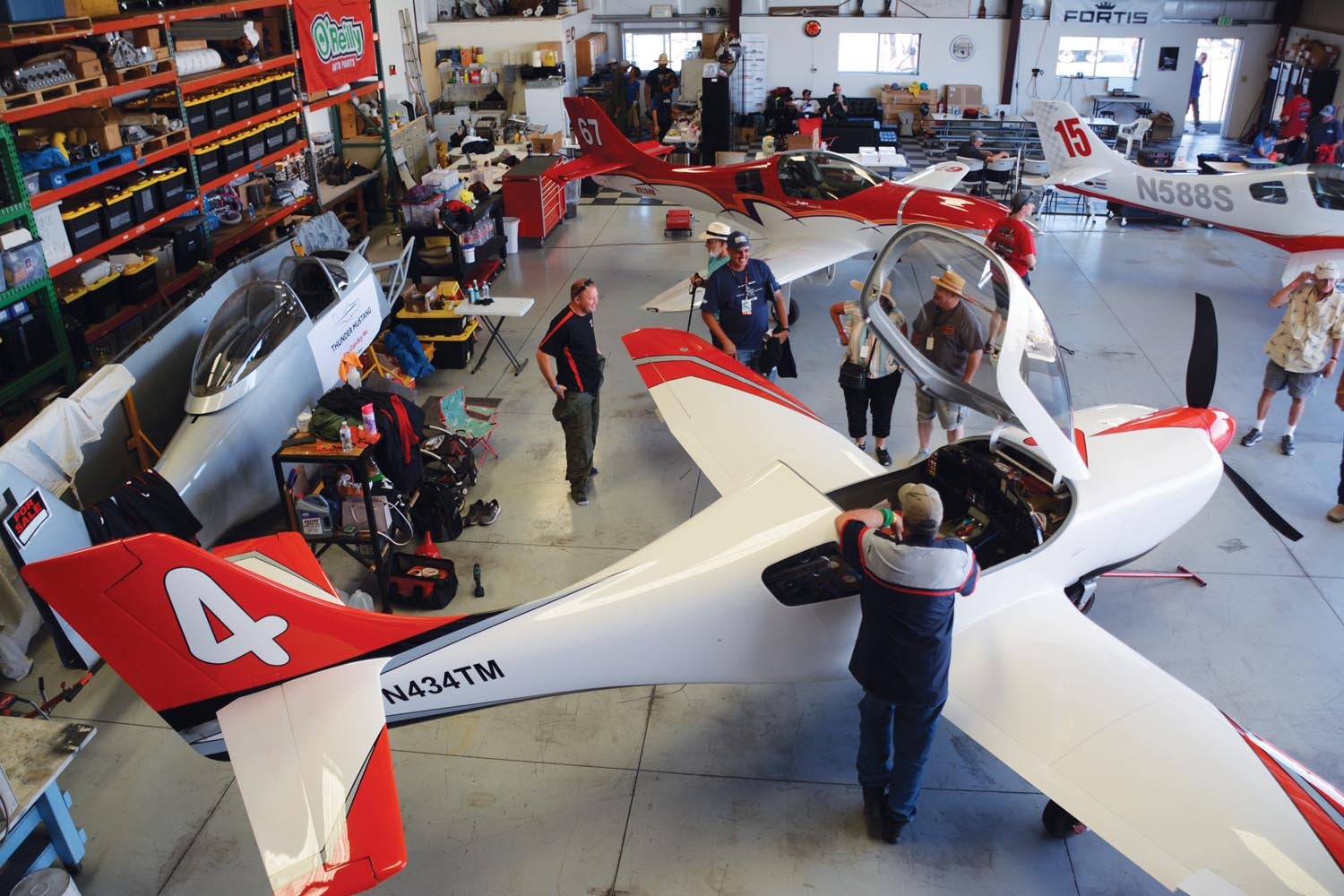
Pros Arrive
It’s worth a side note to acknowledge just how much professional aviation engineering found its way to Reno, especially in the early days. The races might have been held in Nevada, but many of the pilots and techs involved were Californians, often with day jobs in the Golden State’s then-burgeoning aerospace industry. It was an era of multi-mach airplanes and the space race, a time when performance was admired and turning fuel into heat was a national pastime. Interestingly, a disproportionate number of these pros who went racing for fun were linked with Lockheed. There was nothing formal about this. Lockheed was never involved as a company, but a handful of its (and other aerospace giants’) moonlighting employees played key roles in the Reno pits. Most of all it was Lockheed, though. From Conquest 1 through the Nemesis NXT, Lockheed’s shadow can be found throughout Reno air racing. It was a good transfer of industrial knowledge to the enthusiast world.
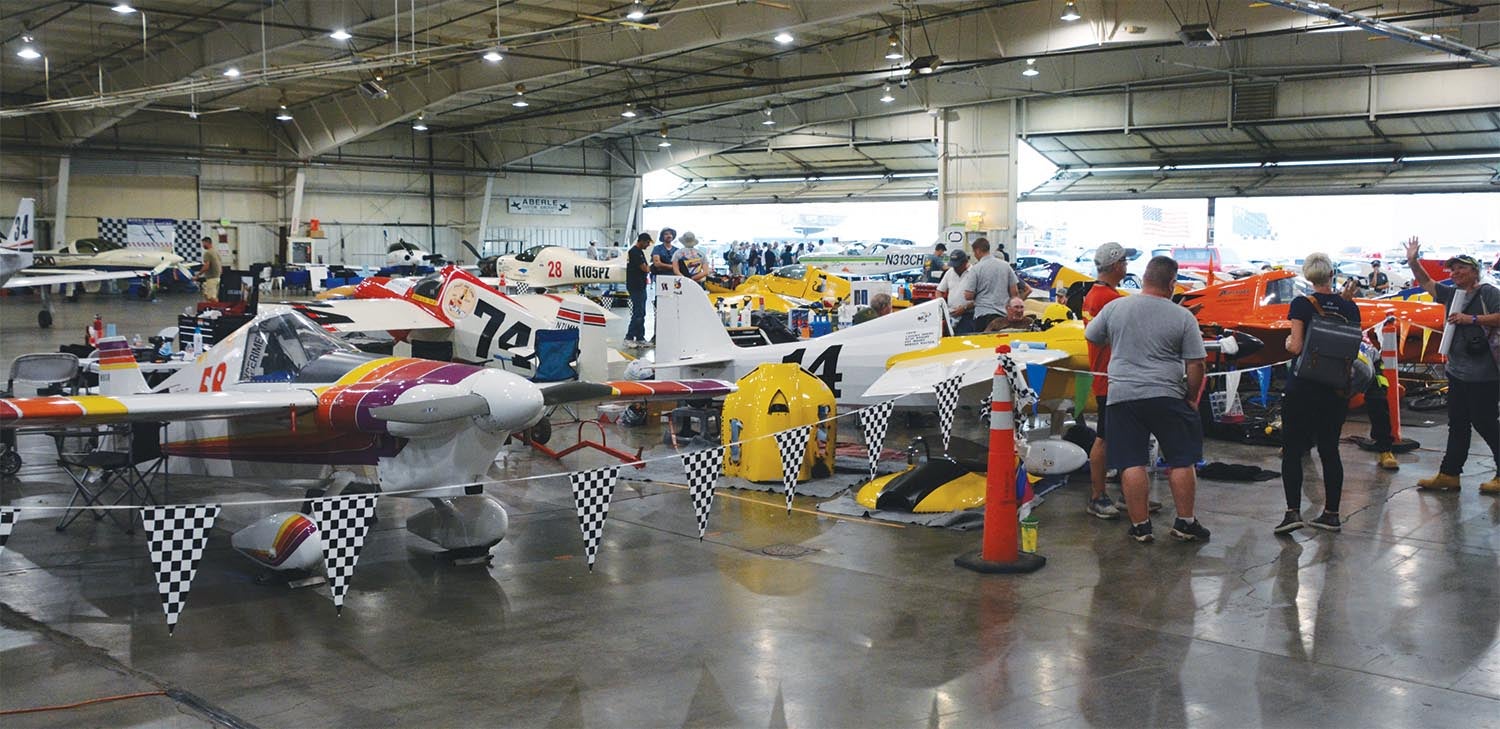
By the late 1970s and into the ’80s, the preparation and ingenuity, which had grown with the racers, erupted in a flurry of inventive and purpose-built race planes. The Biplane class was likely most disrupted as the single-minded Sorceress, Cobra, Sundancer and Amsoil Special arrived en masse. These built-to-a-purpose race planes left the casually prepped (read “tape on some numbers and don’t forget to bring the beer”) sport biplanes with their days numbered. They were not only no longer competitive but downright dowdy by comparison. The change proved too traumatic. After trying to segregate the zoomy new ships into their own, ultimately too lightly populated Racing Biplane class, the lunatics running the asylum voted the fast biplanes out of existence via rule changes. More’s the pity, as if they only had let the new planes run and win, other interesting new planes would have come to fill the fast Gold ranks while everyone else could have competed at their own energy levels in the Bronze and Silver heats.
Similar angst with a changing world followed in Unlimited, where the promising but ultimately unfulfilled threats to ex-fighter domination posed by Tsunami and the Pond Racer were met with a knee-jerk rule requiring a high minimum weight. Designed to keep the WW-II hardware front and center it did just that, ensuring no new airplanes would emerge to replace the Sea Furys and P-51s when the spare parts dried up and they became too rare and expensive to race.
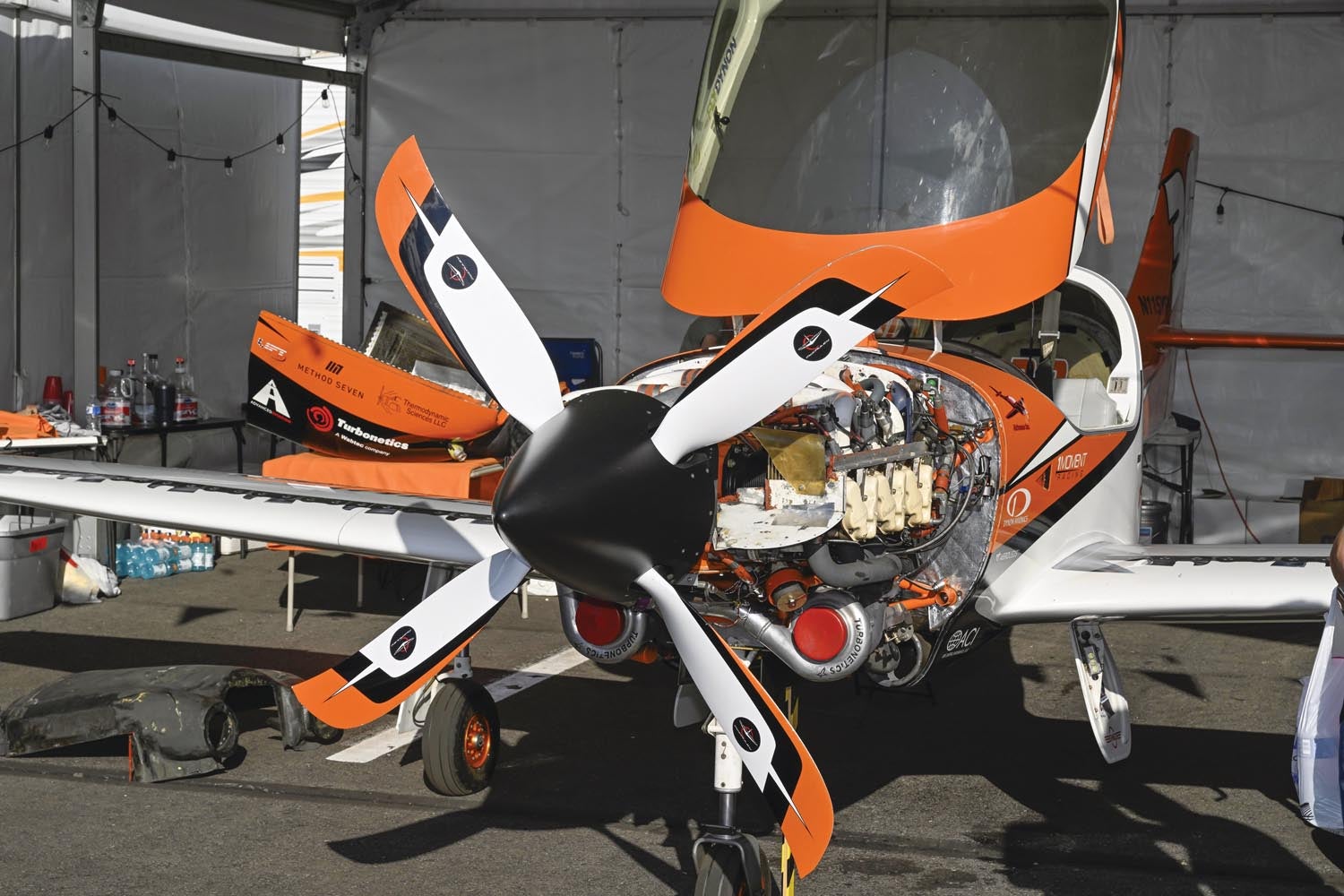
At least the Formula 1 hangar remained true to itself, absorbing the change from humble rag-and-tube homebuilts to composite speedsters in stride. All-conquering efforts such as Nemesis did not kill the class but rather raised the overall expectations of those participating. It remains a hotbed of ingenious and determined action.
From a nuts-and-bolts perspective we can’t say Reno racing is responsible for any one of the improvements we’ve seen in Experimental aircraft since 1964. Certainly there are no aircraft kits offered today stemming from Reno competition. No real kits and very few plans were offered from the F1 ranks, and Sport engendered just the Nemesis NXT in kit form—all 10 of them—but numerically these didn’t so much as quiver the kit-building needle.
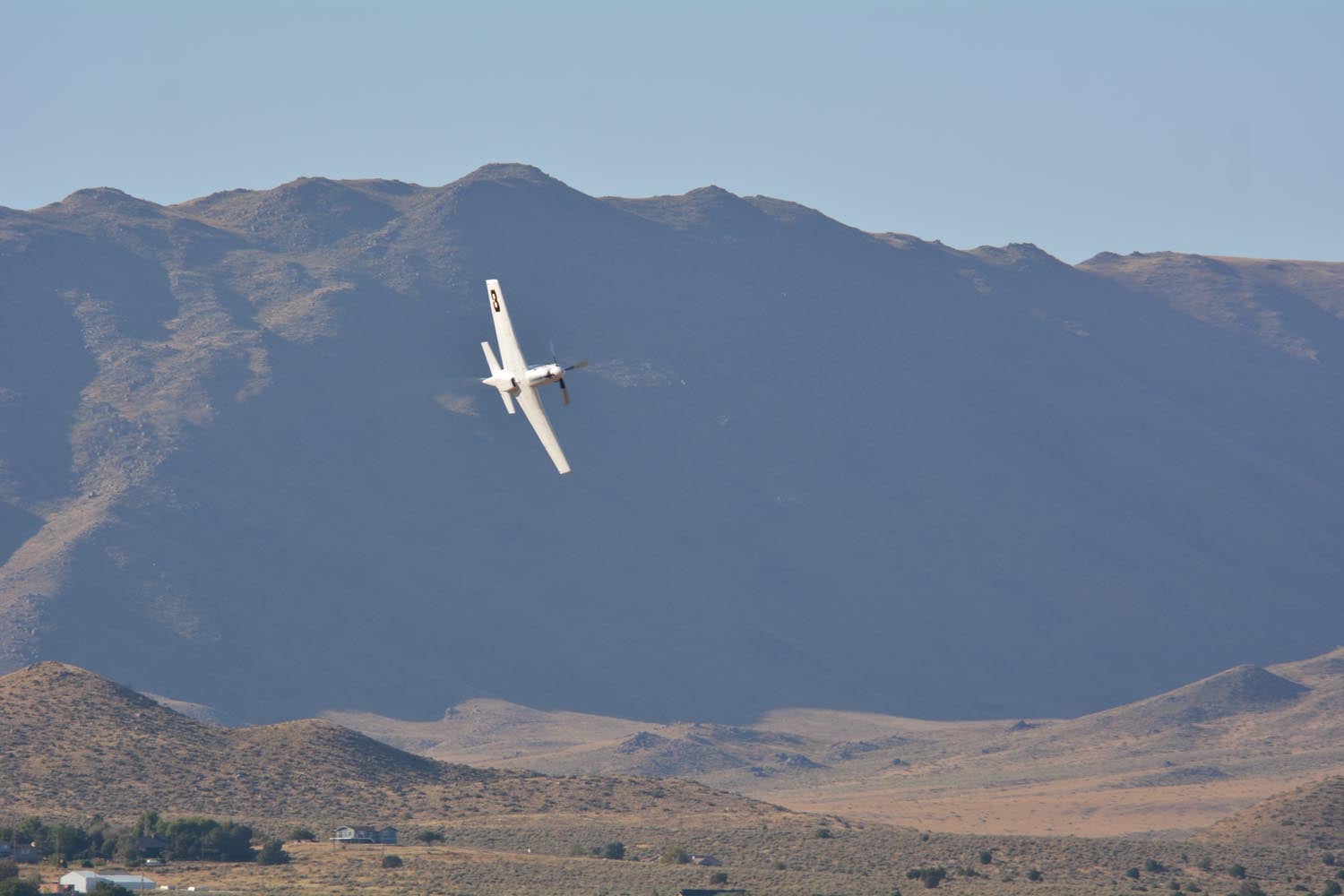
Power Crucible
Engines, however, are a Reno bright spot. Today’s kit builder is offered a range of engine options at least partially attributable to the need to survive, much less prevail, at Reno. Friction-reducing or thermal-barrier coatings, high- and low-compression pistons, weight reduction strategies, cylinder porting, cold sump intakes and other mods were either designed for or tested at Reno and have found their way into sportier daily-driver engine builds. We’ll also wager that Reno (and Red Bull) air racing played a part in Lycoming establishing their Thunderbolt line of engines.
Likewise, an accumulated grassroots book of streamlining or drag reduction tricks has spread through homebuilding thanks in part to Reno experience. Closing airframe gaps, smoothing skin transitions, sanding paint lines smooth, burying antennas, putting fairings around intersections and all the other arcane minutia of speed and efficiency were driven home by Reno crews looking for a little more speed.
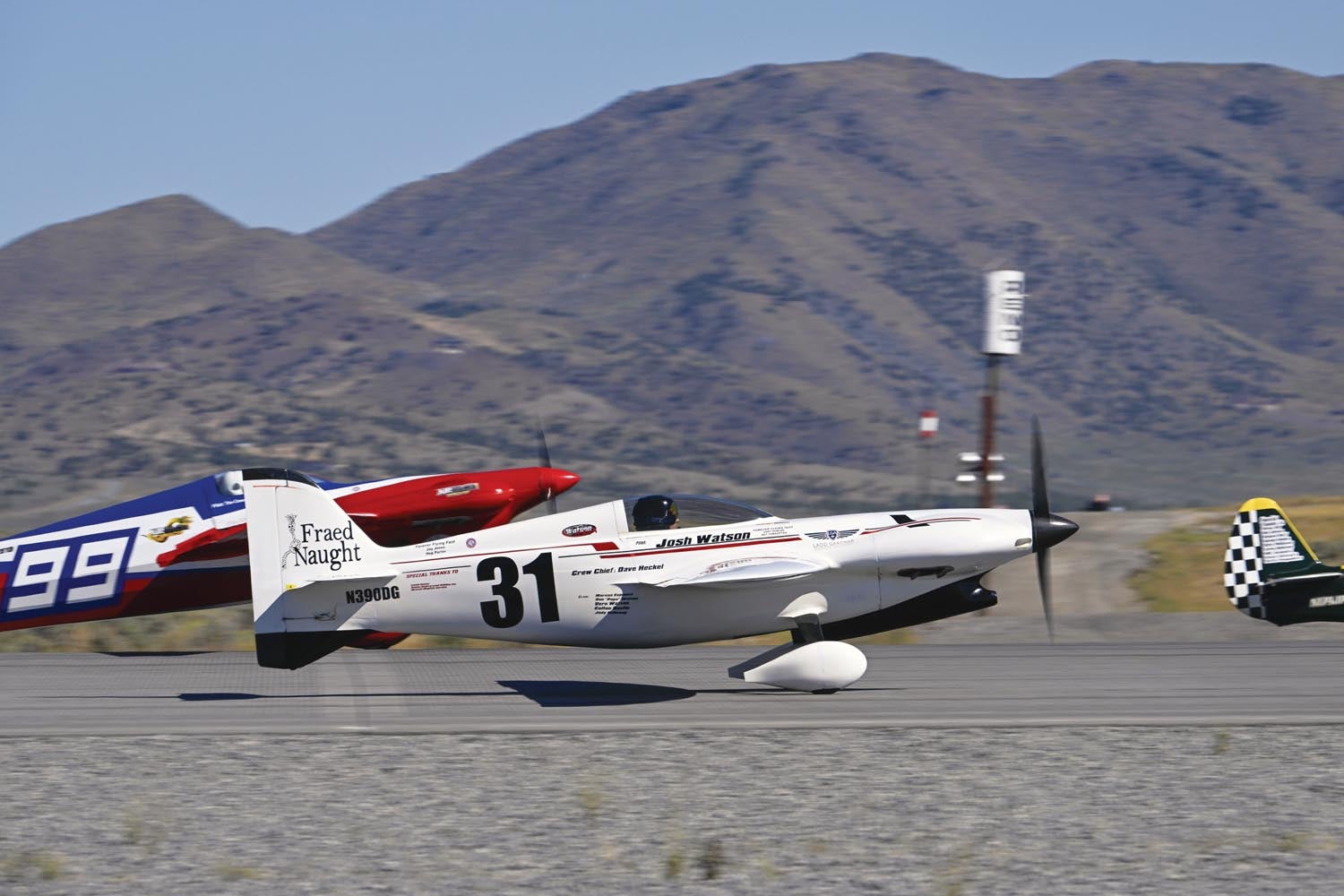
Such empirical knowledge is commonplace today at least in part because Reno was there as a transparent, calibrated aerodynamic and engine laboratory. The structure provided by class rules, the reduced variables of having everyone run on the same course in the same air on the same day, and the calibration provided by having every lap timed made tracking changes at Reno far more accurate than seat-of-the-pants sensations back home. Furthermore, with everyone running in front of their competitors, all were free to deduce what they could from each other’s performances. The weather and track were the same for everyone.
Keeping with the laboratory theme, data at Reno was obtained from operating the airplane as a complete system in the real atmosphere. It was not bench testing a pump as an isolated part; it was how that pump performed when being shook and heated and G-loaded and sharing electrical power with the rest of the plane.
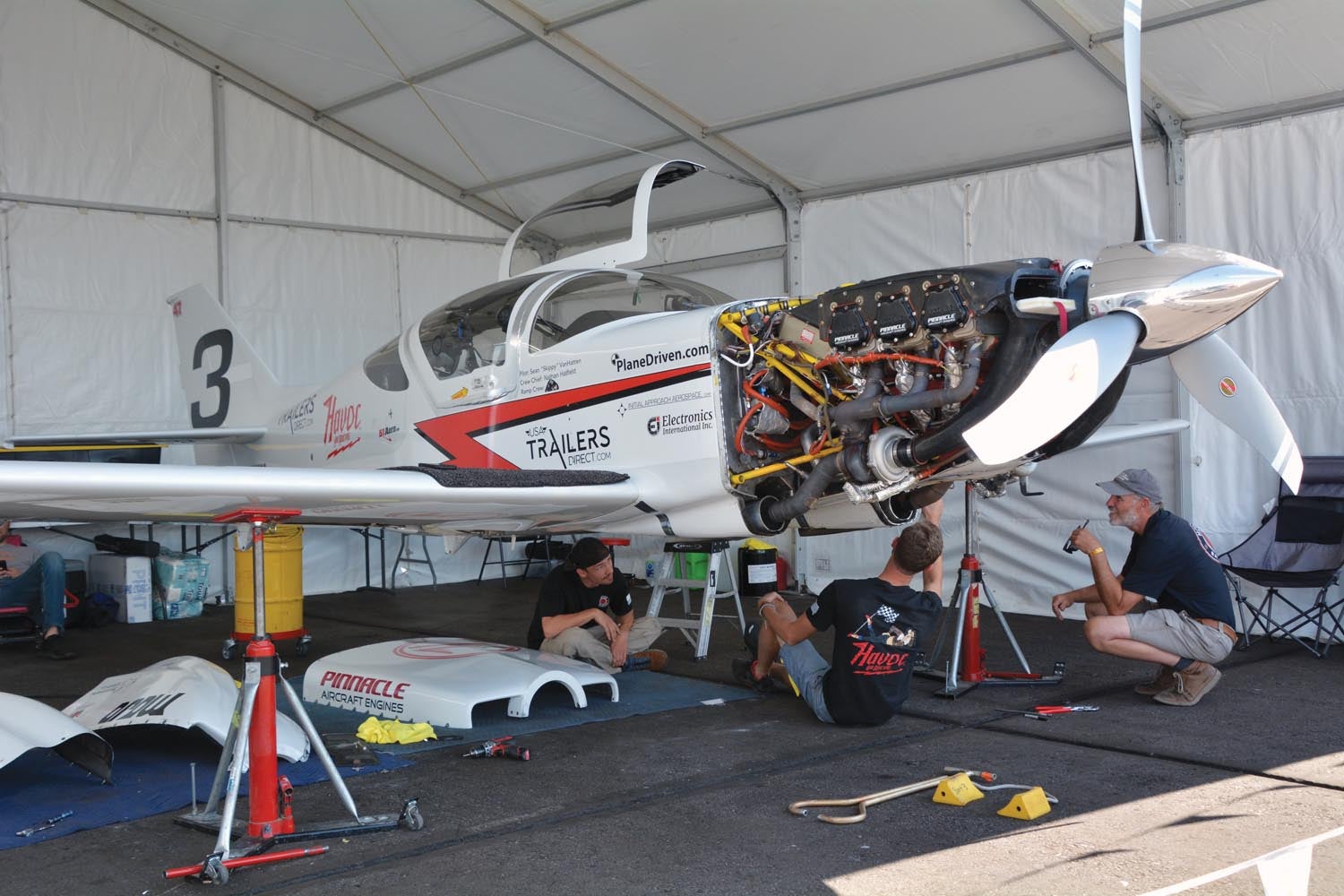
Such testing was also accelerated because racing provides an extreme environment dominated by an unforgiving cauldron of heat, pressure and vibration. If you want to find out how an O-200 Continental rod bearing wears you could run one 4000 hours in a flight-school Cessna, then tear it down. Or you could eyeball the bearings in an F1 racer after two hours of running at 4000 rpm with the oil temperature off the scale. Ditto increased compression ratio.
And so myriad technical details have been explored and tested at Reno. A few of them directly aided the general Experimental community; many of them did not. After all, outside of Reno not many people have been trying to reliably extract 3500 hp from a Merlin V-12. But the thermodynamic understanding involved in hopping up Merlins does transfer to the engines the rest of us run, and with the people making those Unlimited calculations personally on the field at Stead, it was possible for others to meet and interact with them. This brought access to professional
levels we mere mortals could otherwise have never accessed. Furthermore, those technical experts were many times involved with the rest of aviation in their day jobs and took the Reno lessons back to work with them.
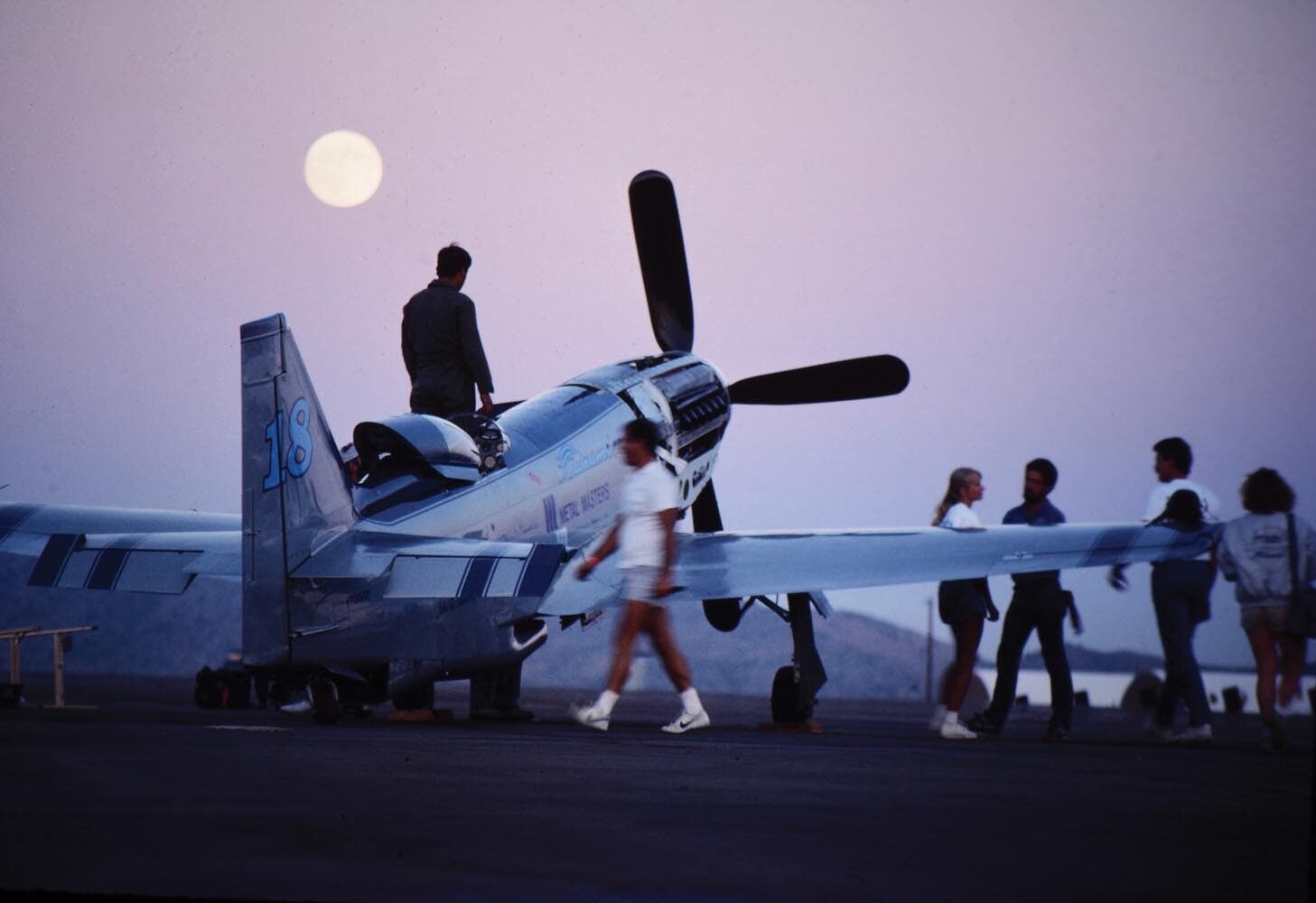
It’s the People
So we’ve arrived at the strongest argument for Reno relevancy, its human factors. To broaden that argument to its widest scope, Reno racing was fun, or more importantly, fulfilling. It was fun to watch and rewarding to do, and by itself this provided the attraction to keep the faithful returning for decades. Reno as a town, with its nightlife and workable travel connections, was a plus in attracting spouses, crew and fans. It was a constant on the calendar, an annual milestone everyone could count on to congregate with their “September family” and keep the connections alive. No community endures as isolated individuals—the bonds loosen, interests change, new people don’t have a chance to be exposed to the activity and eventually people drift away. But it was almost impossible to get away from air racing with Reno on the calendar. Everyone else was going to be there and at the very least you wanted to be there spectating just to see what would happen. Similarly, AirVenture is the big event in sport aviation mainly because every year it is the big event in sport aviation. Reno was air racing because every year there was air racing at Reno (and nowhere else).
The Great Educator
To anyone paying attention, racing teaches a few universal truths. One is it’s always your fault. If you didn’t win, it wasn’t because the wind was wrong or your competitor didn’t play fair. No, at its core racing says it was up to you to prevail, and if you didn’t, it really was something you did or didn’t do that made the difference. Besides attracting characters, racing builds character. It’s the same character, by the way, that sees a person through to completing their own airplane in the face of distractions.
Racing teaches the inviolate nature and supremacy of time. As noted Reno crew chief Andy Chiavetta said, “A man only gets so many Renos.” He didn’t appreciate ego-driven pilots wasting his annual Reno chance with forgetful engine operation or dummy flying tricks.
Putting a Reno racer on the line ready to race could mean staying up much later than you wanted because the plane was broken, and there were only 16 mainly dark hours before it had to run again. Everyone else was off to a shower, dinner, a party and bed, but you got to reconnect with your cylinder wrenches. Afterward you realized how fulfilling it was to have met the deadline and you really didn’t mind missing the party. Reno provided the deadline fulcrum that realization was bent over.
In its admittedly imperfect and often gritty way Reno, at its least, gave us insight as to what was possible and, at its best, the venue to surpass who we thought we were. It didn’t candy-coat anything but at least what you learned there was true because it worked in the real world against real competition. It often extracted a terrifying price for these realizations—each loss a stinging reminder of the value of truth and the limited time we have to learn it. If we value the truth, these costs and benefits will continue at new venues, but for 59 years they were there to be learned because Reno was there to be run.
Photos: Richard VanderMeulen and Tom Wilson.














Excellent article.